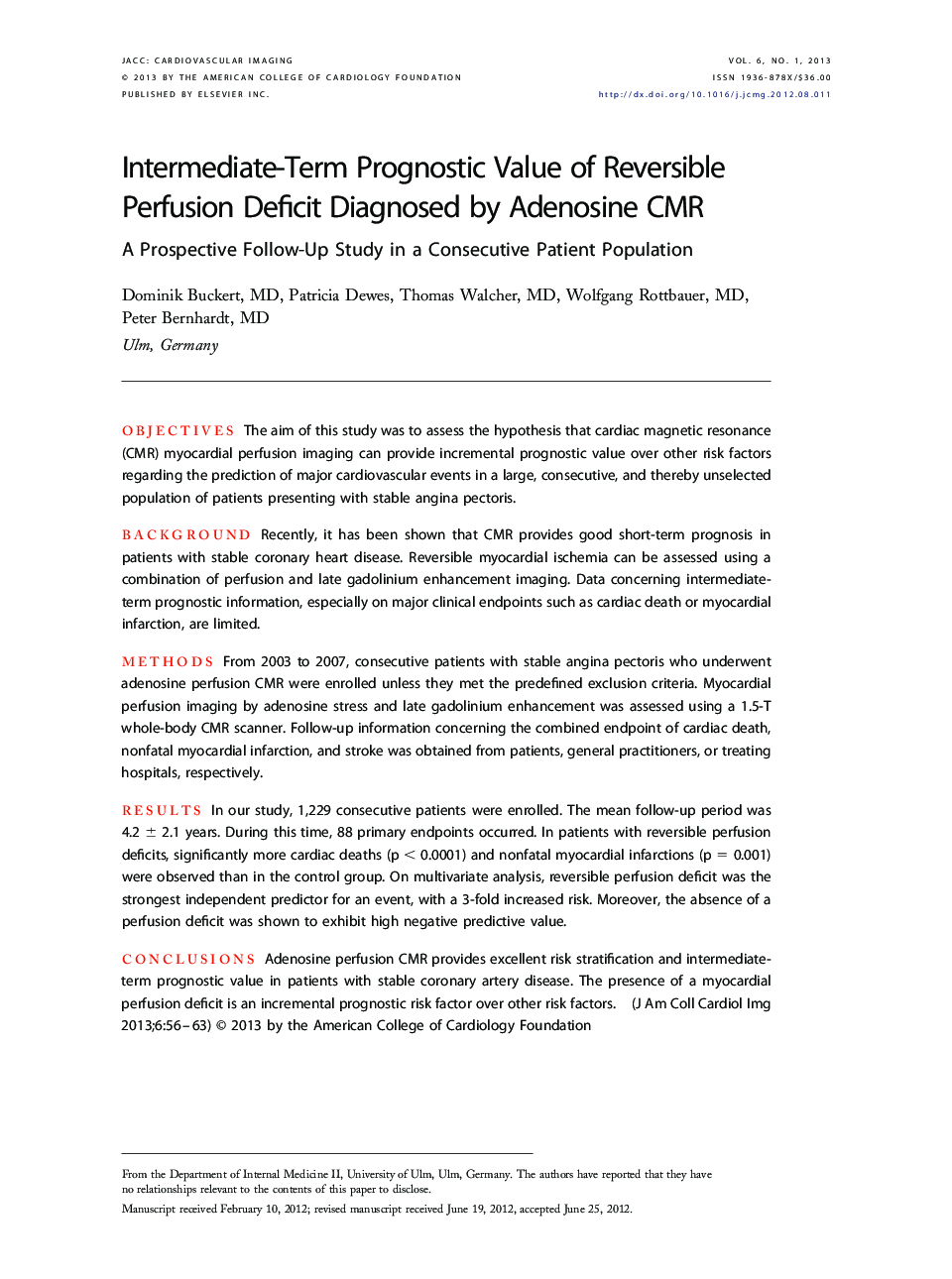| کد مقاله | کد نشریه | سال انتشار | مقاله انگلیسی | نسخه تمام متن |
|---|---|---|---|---|
| 2938086 | 1176920 | 2013 | 8 صفحه PDF | دانلود رایگان |

ObjectivesThe aim of this study was to assess the hypothesis that cardiac magnetic resonance (CMR) myocardial perfusion imaging can provide incremental prognostic value over other risk factors regarding the prediction of major cardiovascular events in a large, consecutive, and thereby unselected population of patients presenting with stable angina pectoris.BackgroundRecently, it has been shown that CMR provides good short-term prognosis in patients with stable coronary heart disease. Reversible myocardial ischemia can be assessed using a combination of perfusion and late gadolinium enhancement imaging. Data concerning intermediate-term prognostic information, especially on major clinical endpoints such as cardiac death or myocardial infarction, are limited.MethodsFrom 2003 to 2007, consecutive patients with stable angina pectoris who underwent adenosine perfusion CMR were enrolled unless they met the predefined exclusion criteria. Myocardial perfusion imaging by adenosine stress and late gadolinium enhancement was assessed using a 1.5-T whole-body CMR scanner. Follow-up information concerning the combined endpoint of cardiac death, nonfatal myocardial infarction, and stroke was obtained from patients, general practitioners, or treating hospitals, respectively.ResultsIn our study, 1,229 consecutive patients were enrolled. The mean follow-up period was 4.2 ± 2.1 years. During this time, 88 primary endpoints occurred. In patients with reversible perfusion deficits, significantly more cardiac deaths (p < 0.0001) and nonfatal myocardial infarctions (p = 0.001) were observed than in the control group. On multivariate analysis, reversible perfusion deficit was the strongest independent predictor for an event, with a 3-fold increased risk. Moreover, the absence of a perfusion deficit was shown to exhibit high negative predictive value.ConclusionsAdenosine perfusion CMR provides excellent risk stratification and intermediate-term prognostic value in patients with stable coronary artery disease. The presence of a myocardial perfusion deficit is an incremental prognostic risk factor over other risk factors.
Journal: JACC: Cardiovascular Imaging - Volume 6, Issue 1, January 2013, Pages 56–63